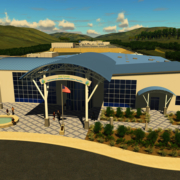East County Advanced Water Purification Project on Track for 2025
The East County Advanced Water Purification Project is moving forward toward its anticipated completion date after the Padre Dam Municipal Water District’s Board of Directors approved the required environmental report.
“The approval of the environmental report for this project brings us another step closer to producing a local water supply for East County and improving the reliability of the water service for our community,” said Allen Carlisle, Padre Dam CEO/General Manager. “We are on track for the project to begin providing water to the East San Diego communities by 2025.”
The East County Advanced Water Purification Project is a collaborative partnership between the Padre Dam Municipal Water District, Helix Water District, County of San Diego and City of El Cajon. The partnership’s purpose is bringing a new, local, sustainable and drought-proof water supply to the East County, using state-of-the-art technology.
Advanced technology improves water reliability for East County
The project will recycle East San Diego County’s wastewater locally, and then purify the recycled water at an advanced water treatment facility using four advanced water purification steps. The purified water will then be pumped into Lake Jennings, treated again at the Helix Levy Treatment Plant and then distributed into the drinking water supply.
The water recycling project will help diversify East County’s drinking water supply, reducing the region’s dependence on imported water. It also helps the region in achieving long-term compliance with the Clean Water Act (CWA), the primary federal law in the U.S. helping to restore and maintain the integrity of the nation’s waters by addressing pollution and improving wastewater treatment. It is one of the United States’ first and most influential modern environmental laws.
Upon its completion, the East County Advanced Water Purification Project will produce up to 12,900 acre-feet per year, or 11.5 million gallons per day of new local drinking water supply.
“This project is forward-thinking, innovative and promises to give East County greater water independence and reliability,” said San Diego County Supervisor Dianne Jacob, who represents the East County region. “It will give us more local control over our most precious resource — and that’s great news for residents and businesses.”
Padre Dam offers tours of the East County Advanced Water Purification Demonstration Project. To schedule a tour or for more information on the East County Advanced Water Purification Program, visit www.EastCountyAWP.com.



